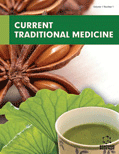Abstract
Aim/ Objective: Phytochemicals are considered an ideal candidate for the production of anticancer drugs due to their pleiotropic activity on multi-mode target events.
Materials and Methods: Plants are ideal reservoirs for new chemical entities and provide a promising cancer research line. Cancer cells can be formed through different types of mutations, including Point mutation, DNA amplification, chromosomal rearrangement, Epigenetic mutation.
Results and Discussion: Products derived from plants are a groundbreaking area because they are eco-friendly, low-cost, Easy, simple, safer, and less toxic compared to other methods of treatment. Vincristine, vinblastine, paclitaxel, camptothecin, cryptolepine, and its analogues, berberine, Antofine, curcumin, ginsenoside, fisetin, chelerythrine, chelidonine, clivorine, clathrodin, dibromophakellstatin, etc are some potential phytochemicals.
Conclusion: The review provides in-depth details of structure, properties, mechanism of action and potential anti-cancer activity of phytochemicals derived from plant sources.
Keywords: Cancer, phytoconstituents, alkaloid, isoquinoline, phenanthroindolizidine, anticancer drugs.
Current Traditional Medicine
Title:Biologically Active Phytochemicals: A Brief Appraisal
Volume: 7 Issue: 6
Author(s): Ayush Mahajan, Pulkit Rana, Dilpreet Singh*Kuldeep Singh
Affiliation:
- Department of Pharmaceutics, ISF College of Pharmacy, Moga, Punjab,India
Keywords: Cancer, phytoconstituents, alkaloid, isoquinoline, phenanthroindolizidine, anticancer drugs.
Abstract: Aim/ Objective: Phytochemicals are considered an ideal candidate for the production of anticancer drugs due to their pleiotropic activity on multi-mode target events.
Materials and Methods: Plants are ideal reservoirs for new chemical entities and provide a promising cancer research line. Cancer cells can be formed through different types of mutations, including Point mutation, DNA amplification, chromosomal rearrangement, Epigenetic mutation.
Results and Discussion: Products derived from plants are a groundbreaking area because they are eco-friendly, low-cost, Easy, simple, safer, and less toxic compared to other methods of treatment. Vincristine, vinblastine, paclitaxel, camptothecin, cryptolepine, and its analogues, berberine, Antofine, curcumin, ginsenoside, fisetin, chelerythrine, chelidonine, clivorine, clathrodin, dibromophakellstatin, etc are some potential phytochemicals.
Conclusion: The review provides in-depth details of structure, properties, mechanism of action and potential anti-cancer activity of phytochemicals derived from plant sources.
Export Options
About this article
Cite this article as:
Mahajan Ayush , Rana Pulkit, Singh Dilpreet *, Singh Kuldeep , Biologically Active Phytochemicals: A Brief Appraisal, Current Traditional Medicine 2021; 7 (6) : e270521193631 . https://dx.doi.org/10.2174/2215083807666210527094408
| DOI https://dx.doi.org/10.2174/2215083807666210527094408 |
Print ISSN 2215-0838 |
| Publisher Name Bentham Science Publisher |
Online ISSN 2215-0846 |
 6
6
- Author Guidelines
- Bentham Author Support Services (BASS)
- Graphical Abstracts
- Fabricating and Stating False Information
- Research Misconduct
- Post Publication Discussions and Corrections
- Publishing Ethics and Rectitude
- Increase Visibility of Your Article
- Archiving Policies
- Peer Review Workflow
- Order Your Article Before Print
- Promote Your Article
- Manuscript Transfer Facility
- Editorial Policies
- Allegations from Whistleblowers
- Announcements
Related Articles
-
Quantum Dot-Based Nanocomposites for Biomedical Applications
Current Medicinal Chemistry Exogenous Expression of WNT7A in Leukemia-Derived Cell Lines Induces Resistance to Chemotherapeutic Agents
Anti-Cancer Agents in Medicinal Chemistry PI3K/Akt/JNK/c-Jun Signaling Pathway is a Mediator for Arsenite- Induced Cyclin D1 Expression and Cell Growth in Human Bronchial Epithelial Cells
Current Cancer Drug Targets Neuro-Transmitters in the Central Nervous System & their Implication in Learning and Memory Processes
Current Medicinal Chemistry Novel Therapeutic Strategies Against Cancer: Marine-derived Drugs May Be the Answer?
Anti-Cancer Agents in Medicinal Chemistry Patent Selections
Recent Patents on Biomarkers MGBG in Combined Anticancer Chemotherapy
Letters in Drug Design & Discovery Exploring a Novel Target Treatment on Breast Cancer: Aloe-emodin Mediated Photodynamic Therapy Induced Cell Apoptosis and Inhibited Cell Metastasis
Anti-Cancer Agents in Medicinal Chemistry Antioxidant Supplementation on Cancer Risk and During Cancer Therapy: An Update
Current Topics in Medicinal Chemistry Fluorescent Molecular Imaging: Technical Progress and Current Preclinical and Clinical Applications in Urogynecologic Diseases
Current Molecular Medicine Oxidative Stress and Cancer: The Role of Nrf2
Current Cancer Drug Targets Emerging Potential of Natural Products as an Alternative Strategy to Pharmacological Agents Used Against Metabolic Disorders
Current Drug Metabolism The Epidemiology and Health Effects of Tobacco Use
Current Pediatric Reviews Natural and Synthetic Retinoids in Prostate Cancer
Current Pharmaceutical Design New Agents – Manifold Consequences: The Management of Lung and Colorectal Cancer is Changing
Current Cancer Therapy Reviews Resisting the Resistance in Cancer: Cheminformatics Studies on Short- Path Base Excision Repair Pathway Antagonists Using Supervised Learning Approaches
Combinatorial Chemistry & High Throughput Screening A Family of Pleiotropically Acting MicroRNAs in Cancer Progression, miR-200: Potential Cancer Therapeutic Targets
Current Pharmaceutical Design Identification and Characterization of BRCA1 and BRCA2 Founder Mutations
Current Women`s Health Reviews Endocannabinoids as Regulators of Transient Receptor Potential (TRP)Channels: a Further Opportunity to Develop New Endocannabinoid-Based Therapeutic Drugs
Current Medicinal Chemistry Patent Selections
Recent Patents on DNA & Gene Sequences


























